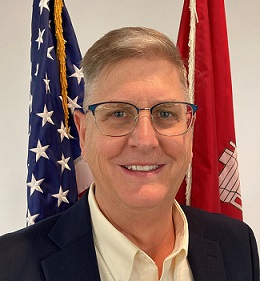Download PDF
Download page Director's Comments 2023.
Director's Comments 2023

By Christopher N. Dunn, P.E., D.WRE
Welcome to the latest HEC Newsletter. I am always impressed by the work and the importance of the work of the HEC staff. As you can see from the variety of articles, the HEC staff has been busy at home and abroad developing tools and practice that is consistent with our mission of bringing state of the art into state of the practice. Some of the work described, like FEMA’s FFRD (Future of Flood Risk Data) Initiative, could truly change not only the way FEMA administers the U.S. flood insurance program, but could also change the way we, USACE, perform real-time water management and planning studies. The strides to get us to the cloud, both data and models, will revolutionize how USACE does business daily.
The two articles about new capabilities within HEC-HMS (Hydrologic Modeling System), Stochastic Storm Transposition and Transform Method Improvements describe new techniques for generating storms and flows. Our HMS team has been able to provide capabilities that heretofore were considered too difficult or too time consuming to entertain. These capabilities and many more can be found in version 4.11 of HEC-HMS which we expect to deliver soon.
I think everyone is tracking the significance of wildfires and the need to be able to evaluate post wildfire burn areas. The ability to address post-wildfire non-Newtonian mud and debris flows in HEC-RAS (River Analysis System) is another capability that previously was not considered possible but is now available. The article on the introduction of non-Newtonian flows is not only fascinating it is also critically important. With the increase in the number of wildfires, their intensity, and geographic coverage, it is important to appropriately model the potential mud and debris flows from the watersheds so we can better prepare for damage and risk. These capacities have also been used to evaluate the impacts of dam failures and even volcanic eruptions. So cool.
Along with the post-wildfire article, Dr. Stanford Gibson, provided another article for the Newsletter on a new sediment load rating curve tool that can help with the analysis of sediment data found with USGS gages. Like most if not all of the features described in this Newsletter, HEC has developed documentation and video tutorials to help you apply the new features.
Ultimately, the ability to better predict flows and inundation is important as we try to reduce the risk to the American public. HEC has a tool called HEC-FIA (Flood Impact Analysis) and when used within the CWMS (Corps Water Management System) suite, FIA can help us describe the benefits of the USACE infrastructure (dams and levees). It helps us estimate the reduction of annual flood damage due to that infrastructure. If you haven’t heard about HEC-FIA or know how useful it can be, I encourage you to read Simon Evans’ article.
While HEC-DSS has been the connective tissue for HEC for nearly 45 years, (its initial development led by Dr. Art Pabst (1979)), it is still underappreciated for its ability to connect the HEC software suite and for its many utilities. In fact, we are having a DSS class the very week I am writing this article and several experienced USACE modelers have told me they had no idea DSS and DSSVue could do so many things. How is it possible that a program that has been available since 1979 has been so underutilized? If you want to know more about the latest versions of DSS and DSSVue check out that article.
Finally, and most importantly, this Newsletter includes an article out the comings and goings of our staff. We have had a number of significant retirements since the last Newsletter, but we have also gained some incredibly talented individuals. The transitions are too many to mention here but for a full assessment, please see the article identifying the changes to our staff.
I hope you enjoy the Newsletter and, as always, if you have any questions for HEC, please do not hesitate to reach out to us.
Chris Dunn, P.E., D.WRE
Director